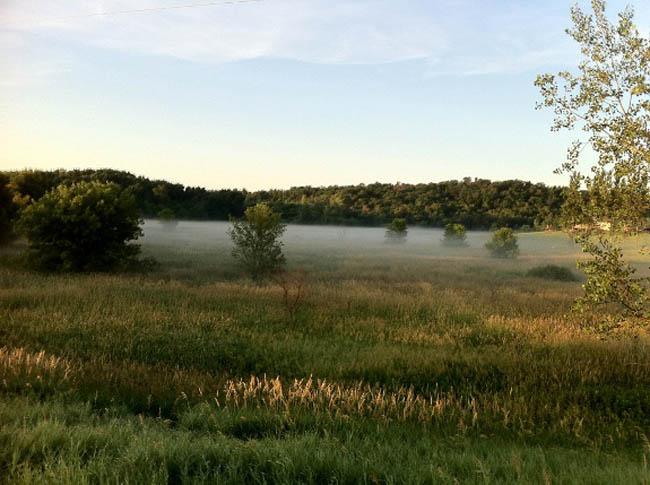April 19, 2012

University of Illinois crop sciences professor Emerson Nafziger is concerned about frost damage to early-planted corn from the low temperatures in central and northern Illinois during the second week of April. He estimates that most of the corn planted before April 1 was up and growing by the time it frosted, and the earliest-planted corn was at or close to the three-leaf stage and suffered the most damage.
Two days after the low temperatures, severe damage was visible on the early-planted corn, with most or all of the above-ground leaf area dead. Plants with severe leaf loss often were randomly spread down the row, singly or in groups of two or three plants, alternating with plants that appeared to have little injury.
“When corn suffers frost injury at this stage, we normally assure ourselves that, with the growing point protected beneath the soil surface, the potential for regrowth back into normal plants is high,” Nafziger said. “However, we are finding that most damaged plants are very slow to send out new leaf tissue, and some are making no regrowth at all. These are essentially dead, and even those that make some slow regrowth are not likely to turn into productive plants.”
The protection normally provided by having the growing point underground is not very effective when soils are dry and when temperatures get below 30 degrees, as they did. However, the likely cause of plant death is that, with seed reserves gone and plants dependent on photosynthesis, plants without leaves ran out of the sugars they need to stay alive.
“We saw this in early May in 2005, when about a third of the plants died, and the rest regrew slowly after the frost,” said Nafziger.
If this crop responds as the 2005 crop did, the damaged plants may fail to recover fully, and yields may suffer even if the plants stay alive. Yields from the earliest-planted crop in 2005 were less than half those of later-planted corn grown at the same population. There is no way to predict whether the recovery of the crop in 2012 will be better than that of the 2005 crop.
“We cannot assume it will be better,” said Nafziger. “We do have the advantage that it’s still early enough to allow us to watch the crop for another week or so before we need to make the decision to replant.”
While waiting, the first task is to count the remaining plants, excluding those that show very little green leaf area on April 20. Once the healthy plant count is known, replant data in the Illinois Agronomy Handbook can be used to estimate yield loss.
For early-planted corn, stands of 30,000 or 25,000 healthy plants will yield about 95 and 88 percent of a full stand. Whether replanting is worthwhile depends on its cost.
“The bigger issue is whether or not the damaged plants will be healthy enough to produce as much as they normally would,” said Nafziger. Physiological damage, coupled with the slow growth of roots and tops due to loss of leaf area, may irreparably decrease the productive potential of plants. Damaged plants are already showing slow growth, and they will be overtaken in size by later-planted corn.
The productivity of the frost-damaged crop may also be reduced due to the unevenness in plant size, the result of uneven damage of plants down the row. The slow regrowth of the more damaged plants will increase the size discrepancy over the next weeks. Roots will also grow slowly as damaged plants suffer from lack of sugars. In general, any unevenness in plant size causes some yield loss, but when the smaller plants are also damaged, they may contribute little or nothing to final yield.
Besides assessing stands and the state of the remaining plants, this would be the time to line up replant seed. This year, finding replant seed of good hybrids may not be easy and could be costly. Nafziger said, “If we continue to see damaged plants struggle to regrow, and if the number of plants we count as healthy actually declines, then replanting may be the more profitable choice.”
You May Also Like




